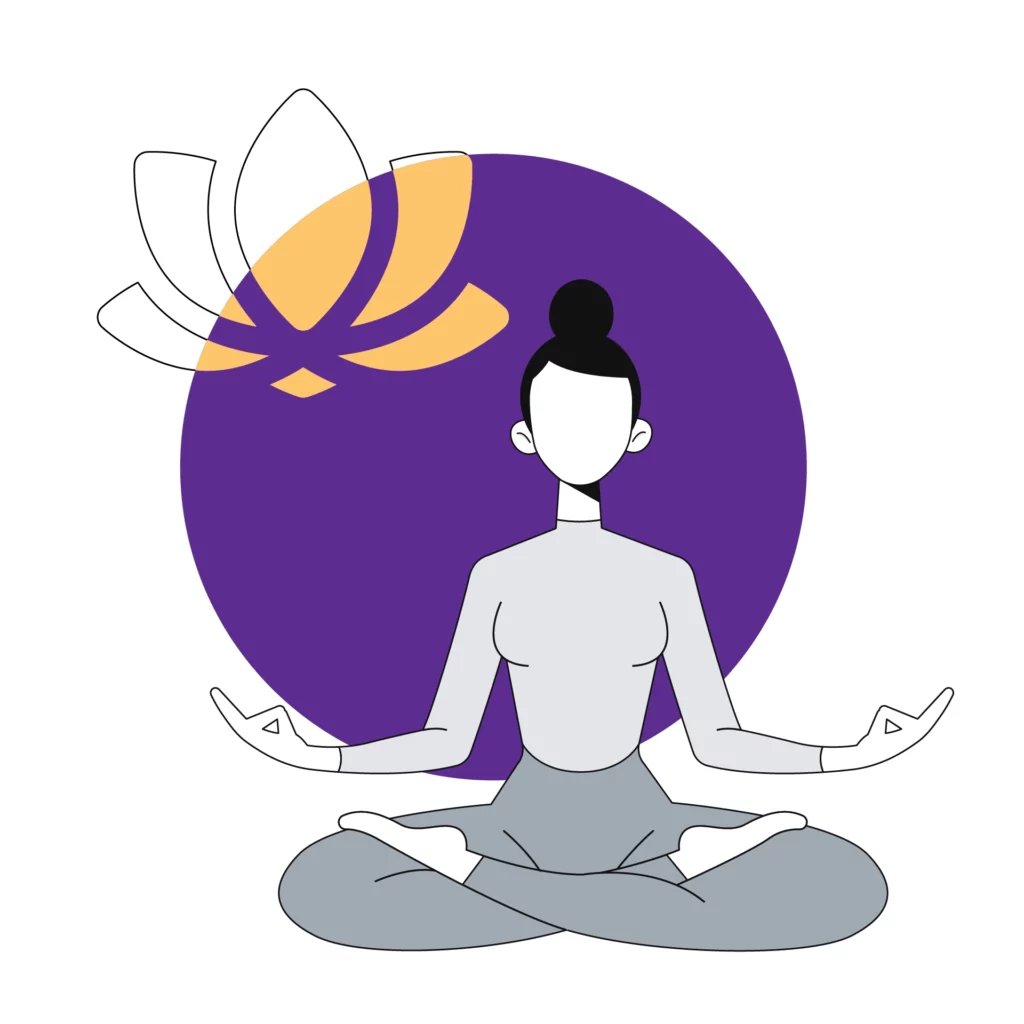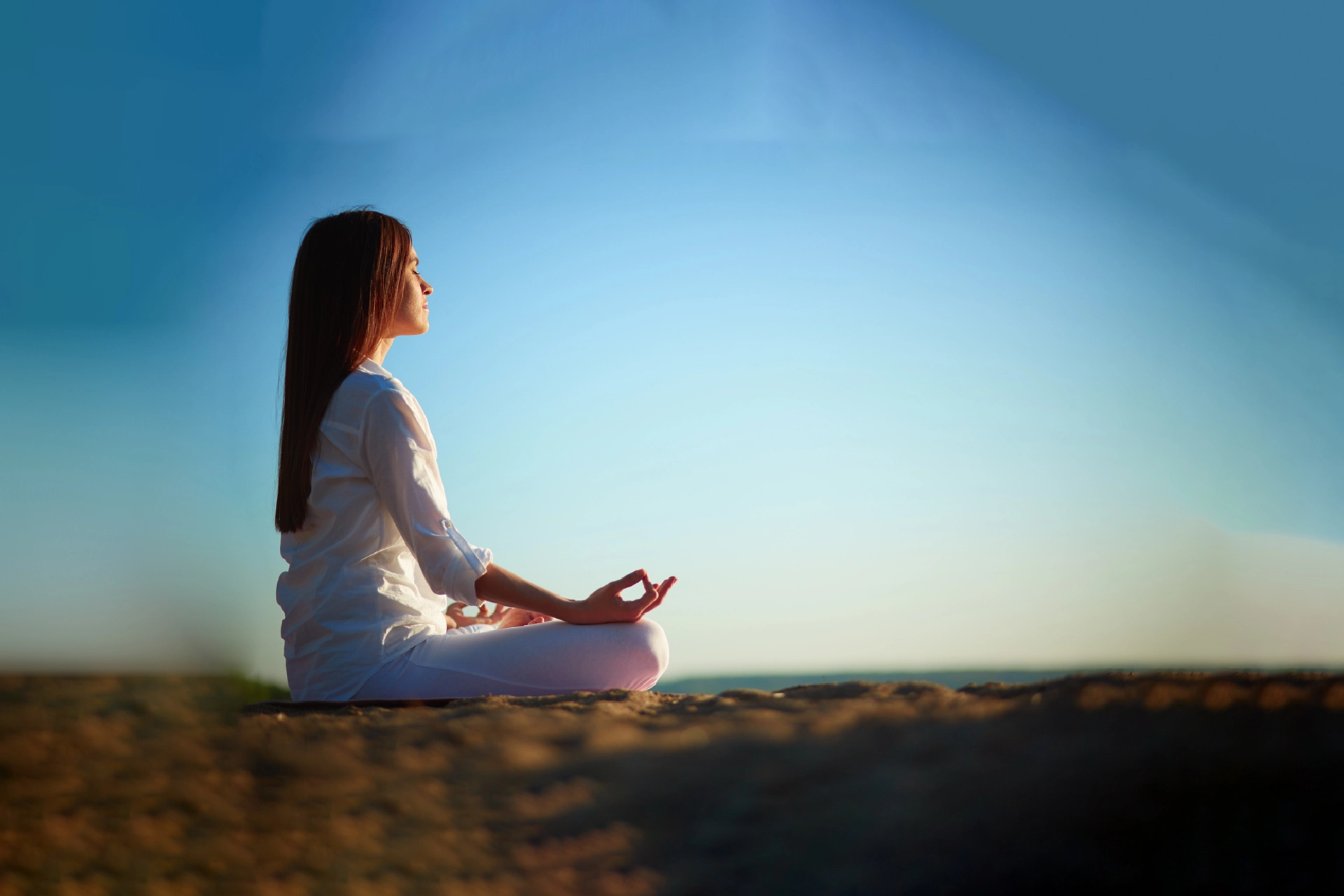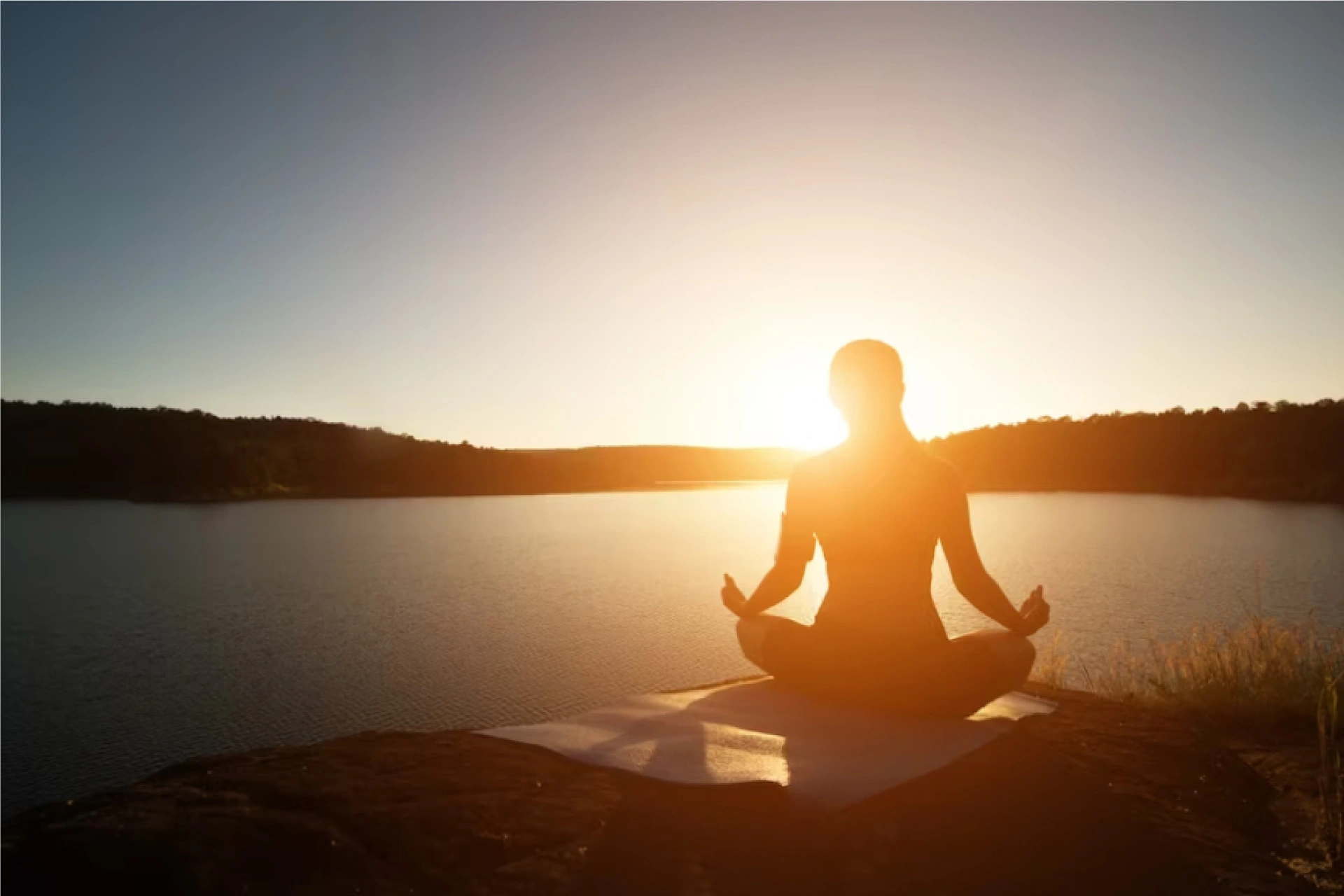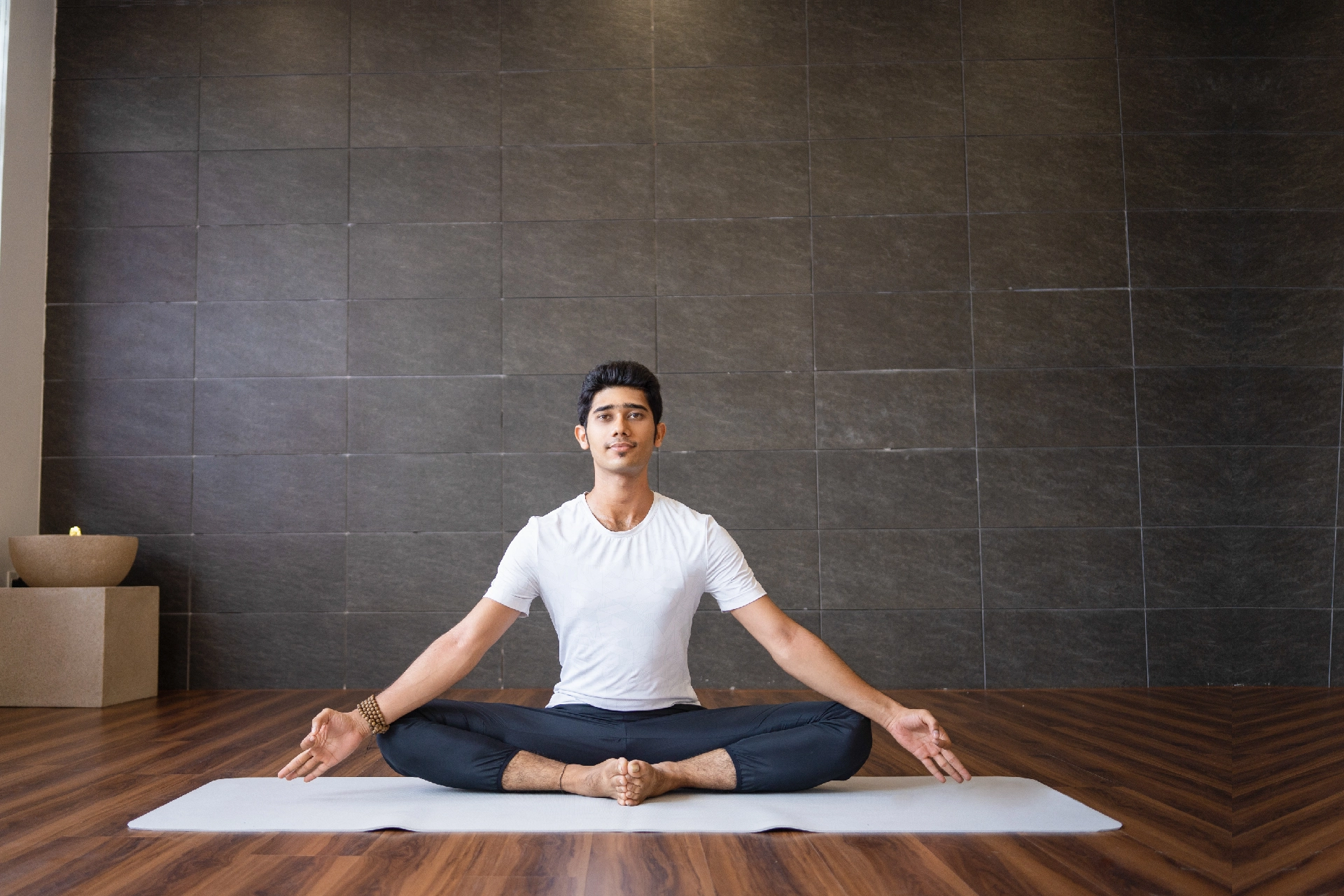Physiotherapist | 6 min read
Benefits of Padmasana Yoga Pose and How to Do it
Medically reviewed by
Table of Content
Synopsis
Padmasana is a classic yoga posture that offers a multitude of benefits for the mind and body. This posture involves various types, steps, and precautions that must be considered to avoid injury and get the most out of practice. However, it is essential to consult a healthcare professional before attempting Padmasana.
Key Takeaways
- Padmasana, or the lotus position, is a popular yoga meditation pose
- Padmasana improves posture by aligning the spine
- Padmasana improves blood circulation in the body
Amid the daily chaos, people yearn for mental tranquillity. Padmasana yoga is a spiritual practice that can assist you in achieving a balance between your mind and body. Padmasana yoga emphasizes meditation, staying detached from the material world, and achieving harmony between our body, mind, and soul.
In this guide, we will explore the different types of Padmasana, step-by-step instructions on how to do it, precautions to keep in mind, and the many advantages of practising this posture regularly.
What is Padmasana?
Lotus pose is another name for the Padmasana. It is a traditional Indian practice where a person sits cross-legged with his feet resting on the thighs on the opposite side. In the Hindu, Jain, and Buddhist traditions, the lotus pose is a well-known posture for meditation. The body can be completely still for an extended period in padmasana.
Additional Read: Tadasana Yoga
Benefits of Padmasana
The Padmasana benefits include improving physical, mental, and spiritual health. Among them are:
Benefits of padmasana for managing diabetes
Practising Padmasana or lotus poses benefits in the reduction of glucose levels and an increase in insulin levels. [1]
Padmasana benefits for knee pain
Padmasana eases arthritis-related pain in the knee and leg joints (swelling of joints). Additionally, it aids in slowing the progression of Genu valgum, an arthritis-related condition in which the knees touch but the ankles do not. [2]Padmasana's contributions to stability
By distributing the pressure on the lower spine, the lotus posture makes it possible for the body to maintain stability for a lengthy period. Holding the trunk and head aids in stabilising the base of the body. [3]
Padmasana's digestive advantages
Padmasana enhances the digestive process and relieves constipation. The abdomen receives the blood that goes to the legs, which promotes digestion. The improvement in the digestive process may aid in body weight maintenance. [4]
Padmasana's benefits for calming the nervous system
Padmasana could aid in balancing the body. The mind becomes calm once the body is in a stable state. This position eases the tension in the muscles surrounding the spine and promotes relaxation. It also clears the mind of unhappy thoughts, which may help to calm the nervous system. [5]
Padmasana's advantages for singers
The lotus pose yoga, known as Padmasana, lengthens the spine and may help people maintain a balanced posture. Incorrect body alignment may affect the lungs, limiting overall vocal freedom. [6]
Padmasana helps during childbirth
Padmasana is helpful when giving birth. In Padmasana, the hip region stretches, and the pelvic muscles become muscular. As a result, it lessens labour pain when giving birth. [7]
Padmasana helps reduce menstrual cramps
By stretching our muscles and strengthening our pelvic region, Padmasana aids in easing cramping.
Padmasana promotes better sleep
This simple and basic pose helps you overcome stress and anxiety and promotes uninterrupted sleep. Additionally, it aids in the treatment of sleep disorders like insomnia. [9]
Padmasana also has the following advantages:
- By relaxing the body's tight muscles, muscular tension gets reduced
- It might aid in the hip opening. It could reduce the load on and wear and tear on the spine
- It might help lubricate the knees
- It might firm up the midsection
- It might assist in maintaining the balance between the wind, bile, and phlegm. The underlying cause of many diseases, including cough, asthma, and gastric disorders, is a change in their proportion
- It might aid in stress management
- It might improve focus and concentration, especially for students preparing for exams
- It might also aid in sacral nerve toning
Always get doctor consultation before beginning yoga so that they can accurately assess your physical condition and provide guidance. To prevent injuries, it is also essential to learn and practice yoga under the supervision of a certified yoga teacher.
Steps to do Padmasana
While performing Padmasana steps, maintaining the proper technique and good posture is crucial to get the most health benefits.
- To begin, sit on the ground with your feet flat on the floor and your legs extended in front of you. Place your hands by your sides while maintaining a straight spine
- Slowly spread your legs out while keeping your heels planted
- Using your hands to draw the feet towards you, bend one knee and place it on the opposite thigh. Ensure your feet are upright with the heel as close as possible to your stomach
- Repeat step 4 on the opposite leg to lock both legs in a crisscross position. Make sure to maintain a straight back and a level head. These are Padmasana's foundational movements. Stay in this position for two to three minutes while taking deep breaths

Types of Padmasana
Because different yoga practitioners may have varying physical abilities, one can perform Padmasana yoga in several ways to better accommodate these variations in physical capacities. Here are some variations of Padmasana:Ardha Padmasana
This position, also known as the half lotus position, only requires one leg to be crossed over the thigh of the other leg. Beginners can advance to the Padmasana position once they feel more secure
Baddha Padmasana
This pose is a more complicated and advanced variation of the Padmasana, described as a locked lotus. Your hands should now wrap around your back to hold the other foot as your legs are in the full lotus position. You can practice this position only after you have mastered the Padmasana
Precautions For Padmasana
Before performing this yoga, it is critical to know the Padmasana precautions you need to consider:
- Padmasana is a meditative pose that is best done in the morning to help refresh the mind and body. However, one can also practice this in the evening
- Padmasana should get performed on an empty stomach. However, if you intend to do it as part of a series of exercises, it is best done 4 to 5 hours after you have eaten
- Because Padmasana is a meditative pose, it should ideally be performed in a calm and peaceful environment with minimal distraction and noise
- Do not perform Padmasana if you have a calf, ankle or spinal injury
- Always stretch and spine and legs before performing Padmasana
- It should also not be practised immediately after a heavy workout. Instead, take at least a half-hour break after your workout before beginning Padmasana
- Avoid Padmasana if you have back pain, knee pain, or a stomach ache. Get a general physician consultation before you practice Padmasana yoga
Tips to Carry Out Padmasana (Lotus Pose)
- Since this pose is meditative, it is best to perform it first thing in the morning if you are a beginner
- The asana must be performed without food in your stomach. When practising asana yoga, you must avoid any meal four to six hours before your session
- Stretch both of your ankles at equal distances. So that you won't put strain on your body and practice the lotus pose comfortably
- To concentrate better, pay close attention to your breathing patterns
- If you feel the pressure is too much while stretching your ankles or are uncomfortable with the stretching, you can use your palms to reduce the strain. This tip is also beneficial to pregnant women who have trouble or physically can not stretch too much
- If you're a beginner and having trouble sitting in Padmasana with both legs balanced, you can also sit in Ardha-Padmasana by placing the opposite thigh on either of the knees
A lotus grows in mud but eventually blossoms into a lovely flower. Similarly, when someone begins practising Padmasana yoga, they see a revival with newfound physical and mental energy. However, remember to listen to your body and avoid pushing yourself beyond your limits to prevent potential harm. To learn more about yoga poses or get the guidance you need, head to Bajaj Finserv Health.
References
- https://pubmed.ncbi.nlm.nih.gov/29037637/
- https://www.ncbi.nlm.nih.gov/pmc/articles/PMC3424788/
- https://www.ncbi.nlm.nih.gov/pmc/articles/PMC5433118/
- https://www.ncbi.nlm.nih.gov/pmc/articles/PMC3193654/
- https://www.ncbi.nlm.nih.gov/pmc/articles/PMC3482773/
- https://www.researchgate.net/publication/7288632_The_role_of_the_neck_and_trunk_in_facilitating_head_stability_during_walking
- https://www.hopkinsarthritis.org/patient-corner/disease-management/yoga-for-arthritis/
- https://www.ncbi.nlm.nih.gov/pmc/articles/PMC6145966/
- https://www.ncbi.nlm.nih.gov/pmc/articles/PMC3667430/
Disclaimer
Please note that this article is solely meant for informational purposes and Bajaj Finserv Health Limited (“BFHL”) does not shoulder any responsibility of the views/advice/information expressed/given by the writer/reviewer/originator. This article should not be considered as a substitute for any medical advice, diagnosis or treatment. Always consult with your trusted physician/qualified healthcare professional to evaluate your medical condition. The above article has been reviewed by a qualified doctor and BFHL is not responsible for any damages for any information or services provided by any third party.





